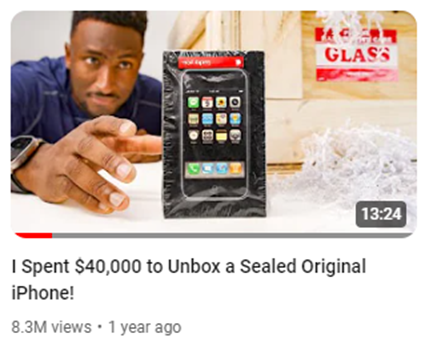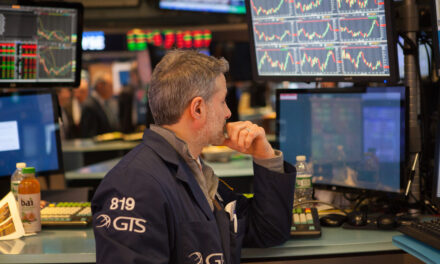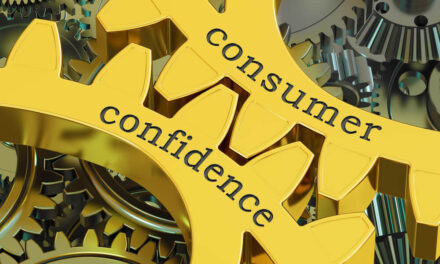Would you buy a $40,000 iPhone?
It lacks any bonus features or next-gen technology to justify that price.
It wasn’t owned or signed by a celebrity.
It’s not even the coveted iPhone 15 Pro.
In fact, it’s already 16 years old!
We’re talking about an original iPhone 1 with its small form factor, thick case and limited processing power.
The answer is obviously a resounding “no.” At least for most of us.
But for Marques Brownlee, YouTube’s leading consumer tech reviewer, $40,000 seemed like a fair deal.
Still shrink-wrapped in its original packaging, his never-opened iPhone 1 was considered a “collector’s item.”
That’s why it commanded a premium of nearly 100X over its original retail price ($499).
And that premium vanishes before your eyes as Brownlee tears away the shrink wrap in a YouTube unboxing video that cost him a small fortune:
“And now, this iPhone is worth dramatically less than I paid for it,” he says to close out the video. “Hopefully, I don’t regret this.”
In Brownlee’s defense, the unboxing made for a great video — one that’s garnered 8.3 million views since it went live last year.
But it still begs the question…
Why would anyone spend a fortune on such an outdated piece of technology?
Astounding Numbers Behind the iPhone’s Success
Since its June 2007 release, the iPhone’s impact on society has been nothing short of revolutionary…
Apple sold more than 2.2 billion iPhones in the first decade. Around 2.2 million new apps have been added to Apple’s App Store. As of late 2023, there were more than 1.46 billion active iPhone users worldwide.
We’re talking about a single company and a single product that accounts for a nearly 60% share of the American smartphone market.
Users now average six to seven hours of screen time a day, and they spend most of that time staring at their iPhones.
It’s arguably the most successful consumer tech product in modern history.
Yet, at the time, the iPhone was NOT a major technological breakthrough.
The world already had touchscreen smartphones.
Mobile browsing, email, chat and apps — competitors already offered all these features.
BlackBerry users were often reluctant to trade in their keyboard-equipped smartphones for new iPhones.
But the secret to Apple’s success here (as always) was less about what the iPhone could do … and more about how the iPhone did it…
Led by its visionary founder, Steve Jobs, Apple set out to create a device that could appeal to everyone — not just the “hardcore” smartphone users who drove the market back in 2007.
So, instead of racing to pack in complex features like its competitors, Apple focused on nailing the customer experience through design, feel and user experience.
Apple created an iconic, ultra-simple design that has since stood the test of time.
The iPhone’s intuitive and user-friendly design was just what the market needed. Because it finally made cutting-edge technology accessible to the masses (something Apple has always excelled at doing).
The iPhone was such a smash hit that it invited billions of new adopters to finally trade in their old Nokia phones and BlackBerries for something more high-tech, growing the market by leaps and bounds in the process.
Recreating That “iPhone Moment”
When you step back and acknowledge the colossal impact the iPhone has had on society, you can see why some folks would get sentimental about that first exciting “iPhone Moment.”
Like baseball cards, comic books and other collectibles, a sealed iPhone 1 is a bit like a relic … a time capsule from a technological revolution.
But instead of getting caught up in the past (or collecting $40,000 smartphones), we’re better off looking toward the future.
Because for Apple, it’s not just an “iPhone Moment…”
It’s a whole business model.
From the iPhone to the iPod and all the way back to the original Macintosh computers, Apple has become one of the world’s biggest tech companies by delivering one revolution after another.
And now, my colleague Ian King is predicting a whole new breakthrough from Apple…
One that will be announced in the coming days.
Stay tuned for more details…
To good profits,

Adam O’Dell
Chief Investment Strategist, Money & Markets





